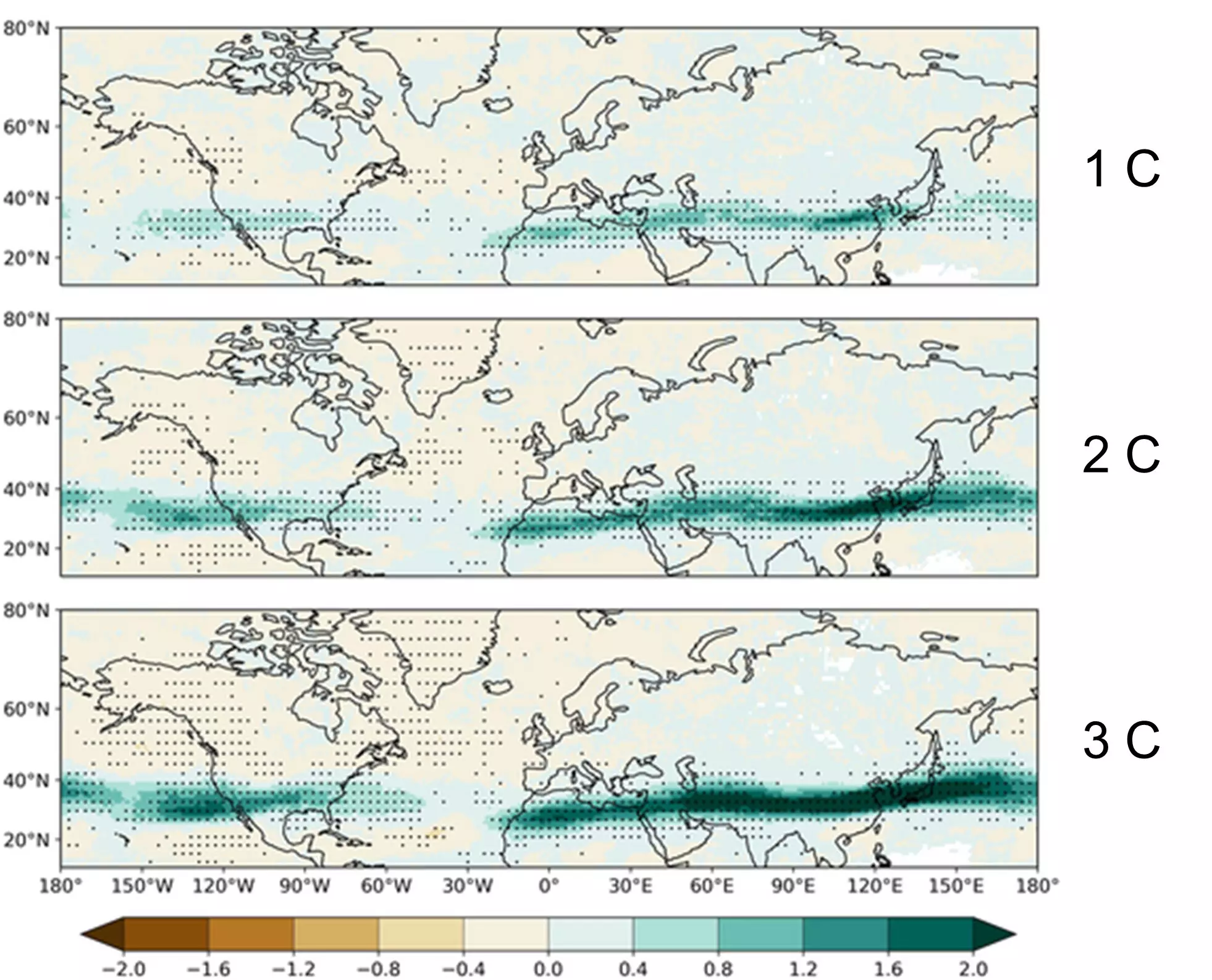As global temperatures rise, a seemingly innocuous yet perilous phenomenon known as clear air turbulence (CAT) is becoming a prominent concern for the aviation industry. New research indicates that this unpredictable and invisible form of turbulence is expected to increase in frequency across the Northern Hemisphere. From 1980 to 2021, there has been a significant rise in instances of CAT, which can catch even the most seasoned pilots off guard, leading to potential safety risks for passengers and crews alike.
The study, appearing in the Journal of Geophysical Research: Atmospheres, sheds light on the connections between climate change and turbulence, using extensive datasets and rigorous model simulations to predict future patterns. This data-driven analysis highlights a stark reality: with every degree of temperature increase, the likelihood of encountering CAT rises accordingly. Regions most affected by the jet stream, such as North Africa, East Asia, and the Middle East, are likely to see the most marked increases, presenting unmistakable implications for airline safety.
Unexpected Turbulence: The Dangers Lurking in Clear Skies
When passengers board a flight, they readily associate turbulence with stormy weather or mountainous terrain. However, clear air turbulence operates differently. Because it occurs in calm air without any visible indicators, it poses a unique danger. Passengers can be jolted unexpectedly, as pilots and crew have no tools to detect its presence effectively. The absence of warning mechanisms elevates the risk of in-flight injuries, making clear air turbulence not just a trivial inconvenience but a serious issue that demands the attention of aviation engineers and regulatory bodies alike.
According to atmospheric scientist Mohamed Foudad, the lead author of the study, CAT is responsible for roughly 70% of weather-related aviation accidents in the United States. Historical encounters with CAT on airlines such as Singapore Airlines and Air Europa serve as stark reminders of the chaos it can unleash. Such incidents underscore the urgency for proactive measures in aircraft design and flight protocols to accommodate the anticipated increase in turbulence, especially as the climate continues to warm.
The Mechanics of Clear Air Turbulence
Clear air turbulence primarily arises near jet streams, the swift air currents flowing west-to-east in the upper troposphere. Commercial aircraft often fly at altitudes of around 10 to 12 kilometers (32,000 to 39,000 feet), where these jet streams are most potent. As climate change alters atmospheric dynamics, the energy levels within these upper-airstreams are expected to intensify, increasing the velocities of jet streams and resulting in more frequent occurrences of vertical wind shear—sudden shifts in wind direction that cause turbulence.
Current estimates suggest that CAT is encountered about 1% of the flying time in the Northern Hemisphere, but forecasts indicate that this prevalence will rise significantly in the coming years. The study reveals that regions such as East Asia experience CAT approximately 7.5% of the time due to the strength of the subtropical jet stream. By utilizing advanced climate models, researchers have predicted a surge in CAT incidents, presenting a challenging dilemma for the aviation sector.
Regional Insights and Variability
Using 11 climate models, the research team analyzed both historical and projected future trends of CAT. They conducted 20 computer simulations, correlating escalating temperatures between 1°C to 4°C with turbulence increases. The results confirmed that the majority of Northern Hemisphere regions influenced by jet streams will experience heightened turbulence, showcasing a compelling link between climate change and increasing air travel risks.
Despite concerns for specific regions like North Africa, East Asia, and the Middle East, the results for the North Atlantic were less conclusive, highlighting a complex interplay of climate variability that might obscure the effects of manmade warming in that area. While the evidence clearly points toward increased turbulence, the specifics of how and where this will occur remain partly elusive.
Future Implications for Aviation
With clear air turbulence’s challenging forecasting nature, the prospect of a bumpier flight experience looms large on the horizon for travelers worldwide. The potential for increased turbulence necessitates heightened awareness and adaptive strategies among commercial airlines to ensure occupant safety. Aircraft must evolve to cope with this growing threat, requiring innovative designs that prioritize resilience against turbulence’s unpredictable nature.
Despite the anticipation of increasingly turbulent skies, experts reaffirm that modern aircraft are engineered to withstand severe turbulence. Foudad offers a reassuring note that, while accidents may become more frequent, aviation technology is prepared to bear the brunt. However, the conversation must shift towards proactive measures; collaboratively, the industry must address not just the impacts of climate change on turbulence but also how to mitigate safety risks stemming from an increasingly dynamic atmosphere. The age of climate-driven challenges has arrived, and it’s time for a thoughtful, concerted response from the global aviation community.

